Expert Tips to grow plumcots fruit all you need to know
A beginner's guide to successfully grow plumcots fruit at home gardin . from choosing varieties, planting, pollinating to pruning, harvesting...
We buy so you won’t have to! We earn commissions from recommended products, which fund testing new items by our team of experts. Thank you for your support!
Do you want your garden to have its own story? Or maybe you’d like a cozy spot in your backyard to relax. You can achieve all of this by adding the amazing platycodon plant to your garden. Its beautiful colors will take you to another world.
And to have this beautiful baby flower, you need to know a few basics about how to care for and grow it. That’s what we’re going to talk about in this post.

kahla akram is a professional home decorator, interior designer, and master gardener writer. he is also a seasoned expert horticulturist, with a wealth of experience and a string of impressive achievements. his work has been featured in a multitude of global magazines, and he operates under his highly respected brand, budge to gadget.
Balloon flowers bloom from mid- to late-summer, usually from June to August. They do well in USDA hardiness zones 3-9 (National Gardening Association), which cover many areas.
Find a sunny spot for your balloon flowers. They need at least 8 hours of sunlight every day. Less sun might stop them from blooming.

according to The Spruce It’s best to plant them in well-drained soil that you’ve improved with compost or other natural stuff. The soil should be a little acidic, with a pH between 5.5 and 7.5.
If your yard doesn’t have the right conditions, don’t worry! You can mix in compost to help drainage and give the plants the nutrients they need before you plant them.

For a beautiful blue display in your garden, plant balloon flowers near other popular plants like lavender, phlox, or yarrow (Gardenista).
So, I’ve tried planting balloon flowers from seeds, just like I did with small flowers. However, the only difference is time
The seeds took 2 years to bloom, unlike the small flowers, which only took one year. Therefore, when choosing between these options, it comes down to you as a person.
Are you patient and enjoy taking things slow to see the flower grow slowly in front of you? Or perhaps you’re more rushed and want to see that garden bloom in no time.
Whether you start with plants or seeds, you’ll end up with stunning blossoms that bring charm to your garden! Balloon flowers attract beneficial pollinators and look great in bouquets.
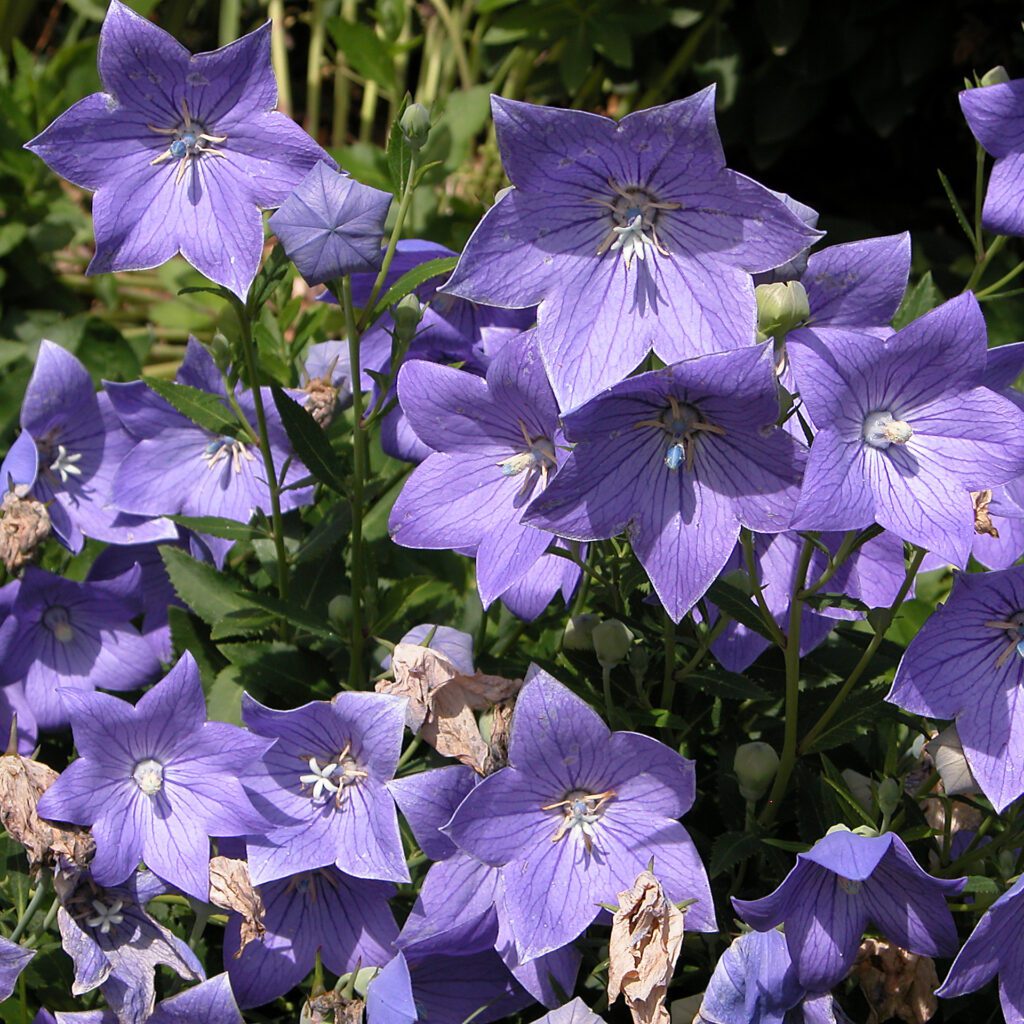
When growing balloon flowers from seeds, make sure to get good-quality ones from trusted sellers.
So, check the seed packets for information on things like how warm it needs to be for them to sprout and how much light they need.
If you’re planting them inside, use a special clean mix for starting seeds and follow the instructions on the packet (Johnny’s Selected Seeds).
Keep the soil warm and damp, usually around 70°F, to help the seeds grow. Once they start sprouting, give them plenty of light and switch to regular potting soil when you see their real leaves.
it should be noted that a study done by (journal of horticultural science) found that Stratification (cold treatment) can improve germination
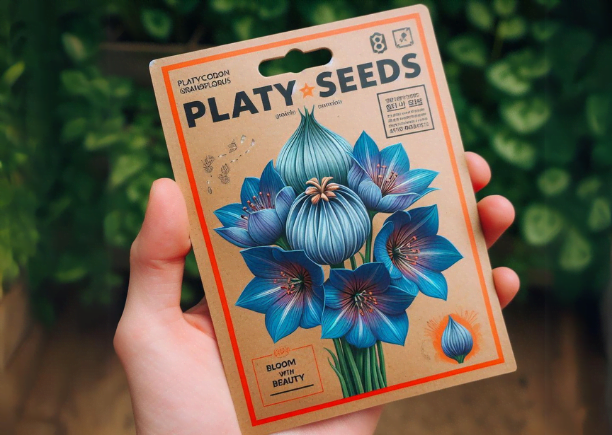
When you’re picking out young plants from a store, choose healthy seedlings with vibrant green leaves (David Culp, Gardeners.com). for me The best size is usually about 4-6 inches tall with good roots.
because I noticed that bigger plants with roots all tangled up can have a hard time when you move them.


The platycodon plant likes loose, healthy soil. But clay soil doesn’t drain well. Gardening with Charlie says these flowers prefer well draining soil.
Before planting, get the soil ready. Dig down about 10–12 inches. If it’s clay soil, mix in sand or compost. Aim for a pH level between 6.5 and 7.5, as advised by the University of California Agriculture and Natural Resources. When transplanting, be careful not to mess up the roots.
Good drainage is key. Without it, dense soil or waterlogged areas will cause problems. As suggested by Fine Gardening, use raised beds to improve drainage. Furthermore, focus on creating loose, loamy soil for happy balloon flowers. Remember, proper soil leads to success!
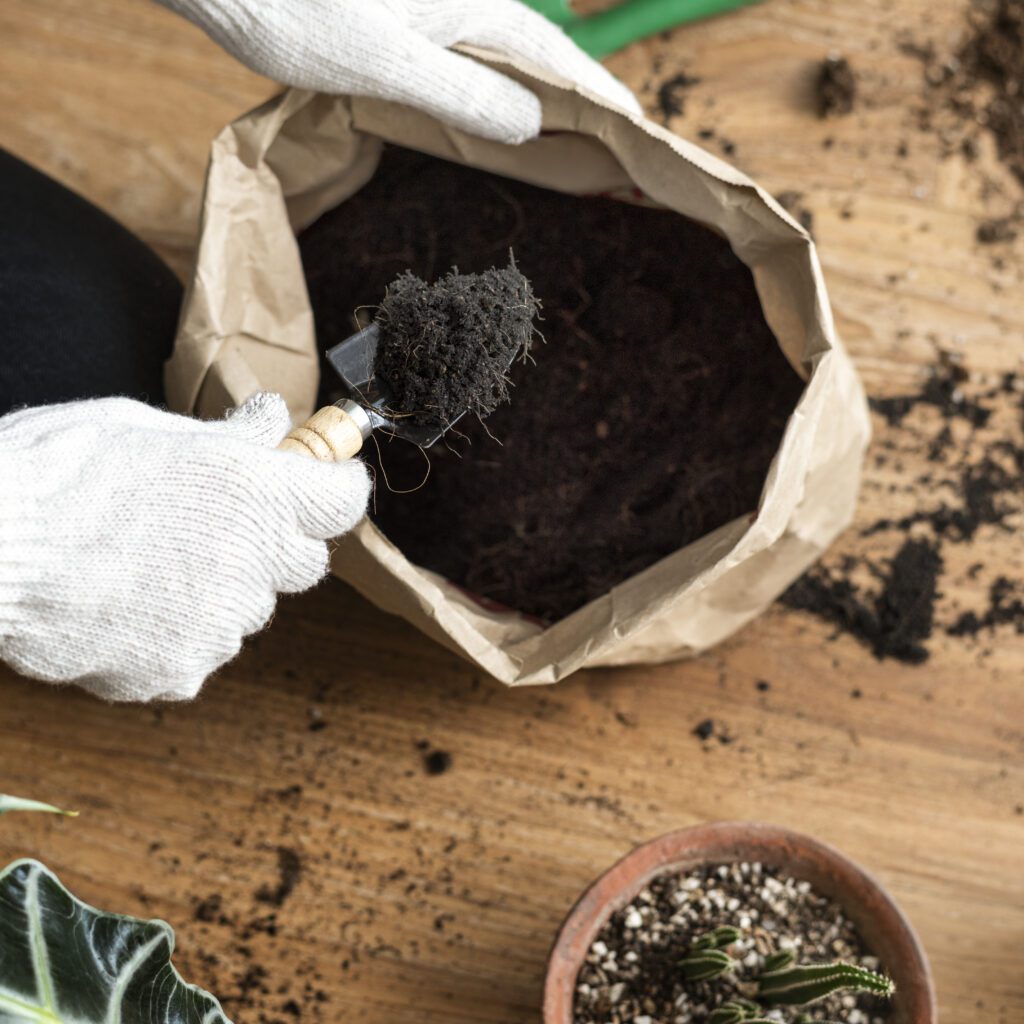
To keep balloon flowers healthy, water them regularly. The Oregon State University Extension Service suggests keeping the soil moist but not too wet or dry. You can check the soil moisture by just feeling it with your fingertip.
Furthermore, when watering my plants, I always aim for 1 to 2 inches of water per week, although this can be changed depending on the weather and whether it rains or not.
In spring, when the flowers are growing, I water them more. But when I see them starting to fade, I water them a bit less.
Therefore, avoid touching the leaves when you water them, as this can transmit illnesses. If you’re using tap water, you should also let it sit overnight to get rid of some of the impurities.
Also, water in the morning to let leaves dry. Use a soaker hose or watering can. Let the soil dry slightly between waterings. Avoid waterlogged soil.

Balloon flowers thrive in the morning sun and afternoon shade. However, they do well with some shade. But you’ll get the most flowers with 6–8 hours of direct sun daily.
The National Gardening Association suggests giving your balloon flowers full sun, but if you live somewhere really hot, it’s smart to offer them some shade in the afternoon. The morning sun is especially great for them. Just keep an eye out for any shade from nearby trees or buildings.
Furthermore, use shade cloths if needed and mimic their native habitat of morning sun and afternoon shade. because with the right sun/shade balance, your balloon flowers will flourish with vibrant blossoms.
Balloon flowers usually don’t need extra fertilizer if the soil is already rich in nutrients. But you can give them a little boost by adding compost in the fall. This helps replace the nutrients they used up while blooming.
For poor soil, try using an organic, slow-release, all-purpose fertilizer in early spring. Look for ones with extra phosphorus to help your flowers bloom. Personally, I’ve had success with organic fish emulsion or seaweed extract. Give it a shot!
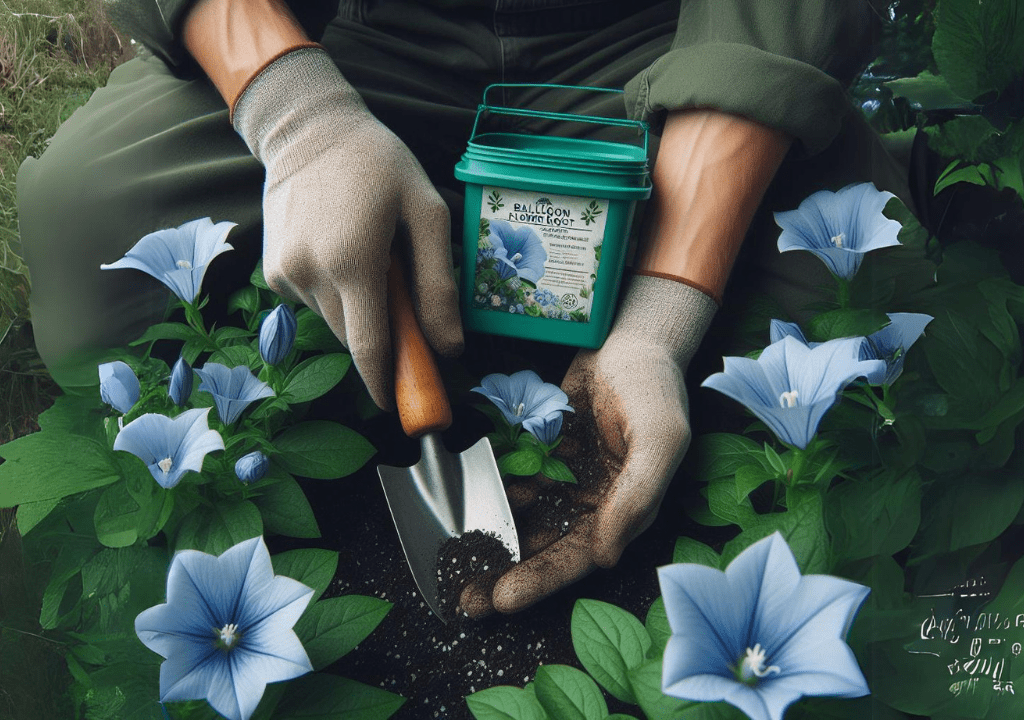
Apply again in midsummer if the plants look unhealthy. Also, mulching helps keep moisture and stops weeds.
Culp on Gardeners.com suggests using a balanced 10-10-10 fertilizer in spring and after the first bloom flush. You can go organic with options like compost tea or composted manure.
Head to your local garden stores for advice on selecting organic fertilizers that are perfect for your balloon flowers. With the right nourishment, your plants will be full of energy to give you vibrant blooms all season long!
Deadheading is key for more blooms on balloon flowers. As flowers fade, pinch them off or cut them with sterile scissors. This directs energy to new buds, not seed pods.
Therefore, deadhead:
Deadheading is quick but really boosts reblooming. Also, fertilize for even more flowers. Plus, check for pests then, though these plants are mostly pest-free. With easy weekly deadheading, your balloon flowers will reward you with continuous, vibrant blooms.

Mulch helps balloon flowers by keeping the soil moist. Organic types like compost, bark, or shredded leaves are great at holding onto moisture, giving your flowers the water they need.
To mulch your plants properly, start by adding a 2-inch layer of organic mulch like shredded bark or wood chips around their base, as suggested by the Rodale Institute. This keeps moisture in, stops weeds, and controls the soil temperature. Don’t forget to top it up during the season to keep it effective.
Mulch also stops weeds by:
Mulch also:
In general, pests and diseases do not harm balloon flowers. However, gardening experts caution that plants left excessively wet may be targeted by slugs and snails. To prevent these pests, ensure good drainage and avoid overwatering.
Neem oil did wonders at keeping my blooms healthy. Furthermore, proper drainage is essential for preventing fungal infections such as root rot.
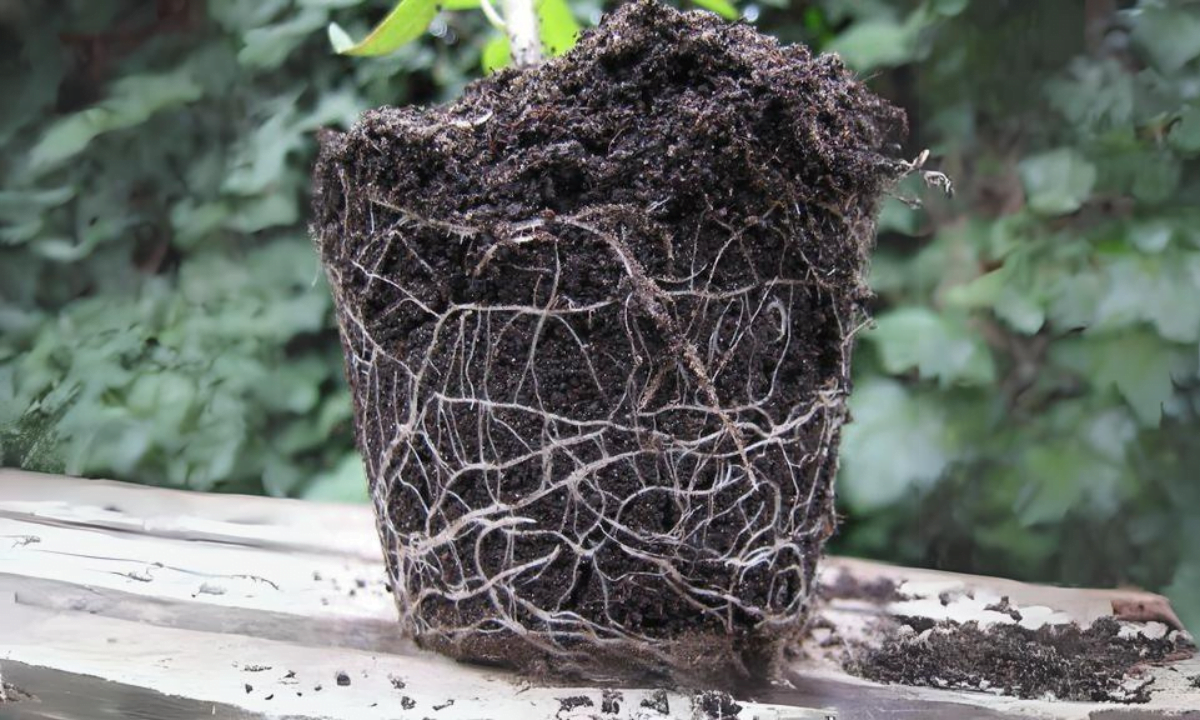
Plant Affected by Root Rot Disease
You know what? My flowers used to droop suddenly, and I couldn’t figure out why. It turns out they were just thirsty and stressed. So, I started spraying them with water, put a humidifier nearby, and gave them some shade. Now they’re much happier!
And when my plants looked dull, I gave them some liquid fertilizer, and wow, did they bounce back! I also tried some natural stuff like bone meal, and it worked wonders. Plus, those foliar sprays? They’re like a quick pick-me-up for my plants!

kahla akram is a professional home decorator, interior designer, and master gardener writer. he is also a seasoned expert horticulturist, with a wealth of experience and a string of impressive achievements. his work has been featured in a multitude of global magazines, and he operates under his highly respected brand, budge to gadget.
A beginner's guide to successfully grow plumcots fruit at home gardin . from choosing varieties, planting, pollinating to pruning, harvesting...
Starting college and moving into a dorm is such an exciting adventure! This new space will be where you study,...
Discover the secrets of cultivating bamboo indoor with our Ultimate Guide. indoor greenery tips and insights for successful bamboo growing...
Moving into a dorm room is an exciting milestone, but it can also be a bit overwhelming. You want your...
You spend most of your life in your bedroom—sleeping, studying, scrolling TikTok. So, it's better to design it in a...
Subscribe to our newsletter for the latest decoration designs, ideas, and tips. Stay connected with us!